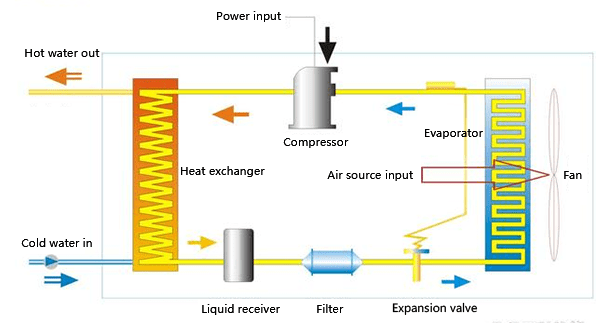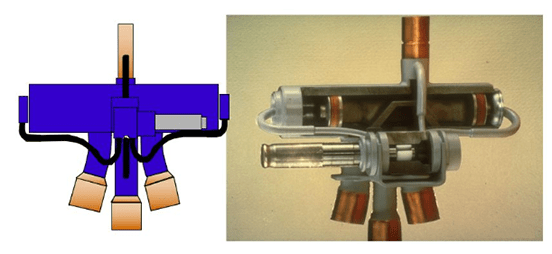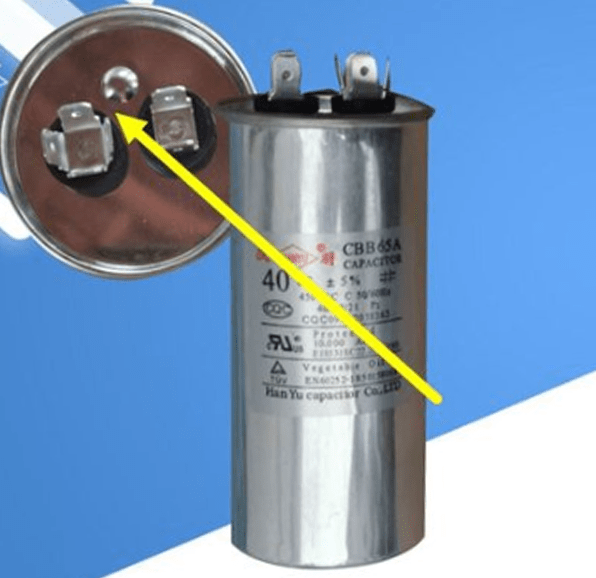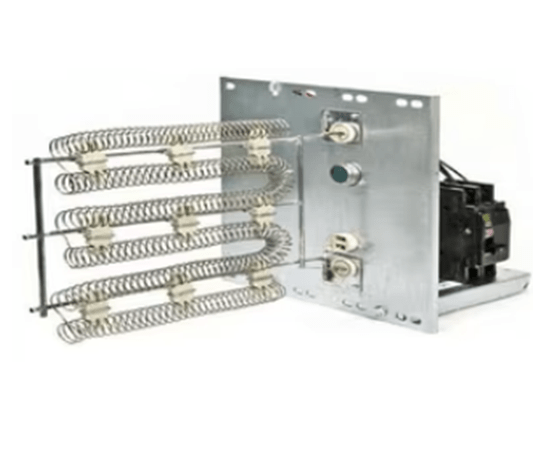
Figure 1: Air source heat pump diagram.
Heat pumps are an energy-efficient alternative to traditional HVAC systems for heating and cooling your home. They work by transferring heat from one place to another, using a combination of several key components, including the compressor, evaporator, condenser, expansion valve, and refrigerant lines. There are also several other heat pump parts that are just as important to the proper functioning of your system.
In this article, we will explore parts of heat pumps in more detail and explain how they work together to provide efficient heating and cooling.

Figure 2: Working principle diagram of air source heat pump system.
Heat Pump Compressor
The compressor is the heart of the heat pump system. It is responsible for compressing the refrigerant, which raises its temperature and pressure. The compressor is typically located outside the home and is powered by electricity.
There are two main types of compressors: reciprocating and scroll. Reciprocating compressors work by using a piston to compress the refrigerant, while scroll compressors use a pair of spiral-shaped scrolls to compress the refrigerant.

Figure 3: Heat pump compressors.
Heat Pump Evaporator
The evaporator is responsible for absorbing heat from the air inside your home. It is typically located inside the air handler unit and is connected to the compressor by refrigerant lines.
The evaporator contains a series of coils that are filled with refrigerant. As the warm air from your home passes over the coils, the refrigerant absorbs the heat and turns into a gas. The cooled air is then blown back into your home through the air ducts.

Figure 4: Heat exchangers.
Heat Pump Condenser
The condenser is responsible for releasing the heat that was absorbed by the evaporator. It is typically located outside the home and is connected to the compressor by refrigerant lines.
The condenser contains a series of coils that are also filled with refrigerant. As the hot refrigerant gas from the compressor passes over the coils, it releases heat to the surrounding air, causing the gas to condense back into a liquid. The refrigerant then is sent back to the evaporator to repeat the cycle after passing through the expansion valve.

Figure 5: Heat exchangers.
Heat Pump Expansion Valve
The expansion valve is located between the evaporator and the condenser and is responsible for regulating the flow of refrigerant. It works by reducing the pressure of the refrigerant as it enters the evaporator. This causes the refrigerant to expand and evaporate, which absorbs heat from the air inside your home.
The expansion valve is a critical component of the heat pump system because it helps to maintain the proper pressure and temperature of the refrigerant throughout the cycle.

Figure 6: Expansion valve used in heat pump system.
Heat Pump Reversing Valve
The heat pump reversing valve is responsible for reversing the flow of refrigerant in the system, allowing the heat pump to provide both heating and cooling.
When the valve is in cooling mode, the refrigerant flows through the evaporator, absorbing heat from the air inside your home, and then releases it outside through the condenser.
In heating mode, the valve reverses the flow of refrigerant, causing it to absorb heat from the air outside your home and release it inside.
A malfunctioning reversing valve can cause the heat pump to blow cold air when it should be heating or vice versa.

Figure 7: Reversing valve diagram.
Heat Pump Refrigerant Lines
The refrigerant lines are the pipes that connect the indoor and outdoor units of the heat pump. They carry the refrigerant back and forth between the two units, allowing heat to be transferred from one location to another.
The refrigerant lines are typically made of copper or aluminum and are filled with a special refrigerant gas that absorbs and releases heat as it cycles through the system.
Heat Pump Air Handler
The air handler is the indoor component of the heat pump system. It includes the evaporator coil, blower motor, and air filter. The air handler circulates air throughout your home, blowing warm or cool air depending on whether you’re heating or cooling your living space.
Heat Pump Blower Motor
The blower motor is responsible for moving air across the evaporator coil and into your home’s ductwork. It’s typically located inside the air handler unit and is powered by electricity.

Figure 8: Fan coil unit.
Heat Pump Thermostat
The heat pump thermostat is the control center for your heat pump system. It allows you to set the temperature and control the operation of the heat pump. Most thermostats have several different settings, including heating, cooling, and fan-only mode.
Some thermostats also have programmable settings, which allow you to set the temperature at different times of day or days of the week, depending on your schedule. The thermostat communicates with the heat pump to turn it on or off, depending on the temperature setting. A malfunctioning thermostat can cause the heat pump to run continuously or not turn on at all.

Figure 9: McQuay thermostat.
Heat Pump Capacitor
The heat pump capacitor is an essential component of the heat pump system. It is responsible for storing electrical energy and releasing it when needed to start up the compressor and fan motors.
Capacitors come in two types: run capacitors and start capacitors. Run capacitors are continuously in operation, while start capacitors are only used to get the motor started.
Capacitors can fail over time, which can cause the heat pump to stop working. Signs of a bad capacitor include a humming or buzzing sound coming from the outdoor unit and difficulty starting the system.

Figure 10: Capacitor for heat pump.
Heat Pump Heat Strips (Heat Pump Auxiliary Heat)
Heat strips are electric heating elements that provide supplemental heat when the heat pump is not able to meet the heating demand of your home. They are typically installed in the air handler unit and are activated when the thermostat senses that the temperature inside your home is dropping too low.
Heat strips can be costly to operate, so they should only be used when necessary. In general, heat strips are most effective when the temperature outside is above freezing. When the temperature drops below freezing, the heat pump may not be able to keep up, and you may need to use a backup heating source, such as a furnace or space heater.

Figure 11: Heat strip.
Heat Pump Defrost Control
The defrost control is responsible for removing frost and ice buildup from the outdoor unit of the heat pump. It ensures that the heat pump operates efficiently in cold weather.

Figure 12: Heat pump fan current defrosting control system.
Conclusion
In this article we introduce parts of a heat pump (parts of a heat pump system). Each of these heat pump parts plays a critical role in the operation of the system. By understanding how these parts work together, you can ensure that your heat pump system is operating at peak efficiency and providing you with the comfort and savings you deserve.
If you’re experiencing issues with your heat pump, it’s important to consult with a professional HVAC technician who can diagnose the problem and make any necessary repairs or replacements. With proper care and attention, your heat pump can provide reliable, cost-effective heating and cooling for years to come.
Related Info
How to Add Oil to Semi-Hermetic Compressor: A Step-by-Step GuideWhat is a Hermetic Compressor? Understanding the Basics
How Does a Scroll Compressor Work? Components, Principles, and Applications
What is a Water Source Heat Pump (with Water Source Heat Pump Diagram)
Heat Pump vs Air Conditioner: Which One is Right for You?


